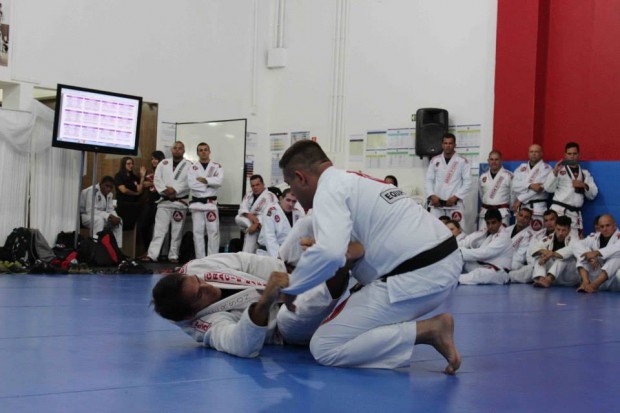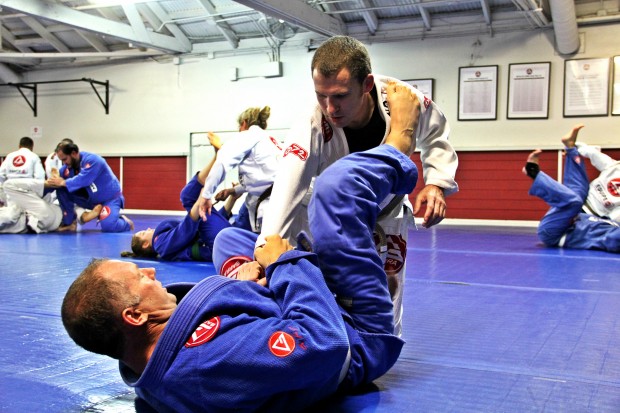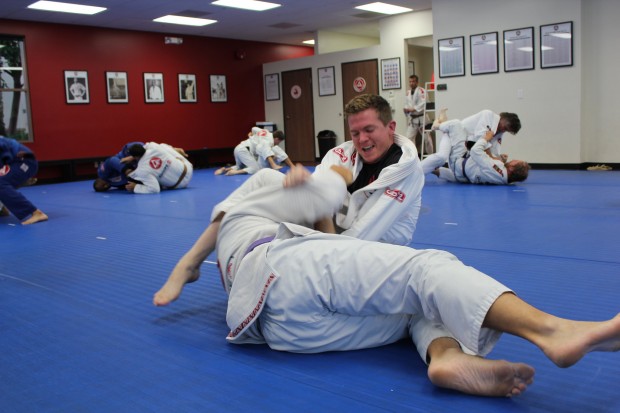What Is The Role of Your Professor in Your BJJ Training?
The best possible way to learn bjj is under the direct instruction of a black belt professor. The black belt has a deep understanding of all of the fundamentals and basics to get the student progressing as quickly as possible. Without a proper foundation of the fundamentals early on, the students growth is limited and they will likely develop bad habits.
The most obvious thing a student of bjj gets from their instructor is the technical side of jiu-jitsu. The correct mechanics and ways to execute the techniques and which techniques are to be utilized in which situation in a roll. Beyond that, there are more subtle ways that training under a blackbelt professor is immensely helpful in guiding the student on their study of brazilian jiu-jitsu
Here are 3 different ways your Black belt instructor also helps your bjj training:
1) Progression of the level of techniques suitable for the students level
read also: Don’t Ignore the Basics : Advanced Techniques Too Quickly
There are levels of techniques – those considered basic, and those considered much more advanced. The student of bjj should concentrate their early efforts on certain basic techniques as the foundation of their training.
As they gain more ability to move their bodies, and understanding of the basics, the student is ready to add the next level of techniques to their game. This is where the black belt, who is observing the students progression can guide them to the next level that they ma be ready for.
If the student has grasped the closed guard basics, then the professor can suggest they drill some open guard sweeps and attacks to build on what they already have. If the student tries to learn too many advanced things before they are ready, they squander their training efforts in a direction of little return for them.
Most would agree that the first year student should be learning how to pass and recover the guard than drilling a Worm guard sweep that they saw on Youtube.

2) “Invisible” jiu-jitsu
Youtube allows us access to the technical training of world champions with a simple search.
Looking for some new ideas on variations on the bow and arrow choke from the back, I found pages of results. Finding technique instructionals has never been easier.
This is the “WHAT” and “HOW” of bjj.
But not the “WHY” it works.
What is NOT so easy to communicate through Youtube bjj videos are the concepts and such “invisible” BUT IMPORTANT factors as where the weight should be and how the pressure should “feel”. Not obvious to the observer is how the blackbelt demonstrating the technique is applying their bodyweight or creating pressure on the opponent.
Often when I demonstrate a technique to the students, I will show 2 similar appearing variations. The difference is some subtle pressure in the correct version that is killing the opponent’s efforts to escape.
I say that people watching the match will not understand why the person on bottom seems frozen and not trying to escape. What they can’t SEE, but the opponent on bottom can FEEL is this “invisible jiu-jitsu” and is completely controlled.
Your blackbelt professor will say “Lay down and let me do the technique on you, so that you can FEEL the pressure for yourself.”

3) Steering you away from the wrong things
If we were going to compile a list of all of the technique that were in existence in jiu-jitsu we would end up with a VERY long list indeed!
But we also recognize that not all techniques are created equal. Some techniques are considered “high percentage” – those that we see effective at the highest levels of international competition.
Others, while flashy and occasionally resulting in a sweep or tap, are considered lower percentage against more experienced opponents who know how to counter.
I have heard certain techniques described as “high reward but high risk”. Sure, you might get it and sweep or tap your opponent. But if you miss it….end up in a BAD situation!
One of the very most helpful things I got from my first bjj professor was his opinion in eliminating what NOT to spend my precious training time learning.
Low percentage moves or those techniques that would leave me in a bad position if I missed it were set aside and instead IO spent my mat time working on the high percentage stuff that would serve me better.
I would come into the academy with a question about a technical variation I had seen and ask his opinion. A typical answer would be “This CAN work sometimes, BUT this is what commonly happens when your opponent defends. I would recommend THIS BETTER option for you with no risk.”
This can be enormously helpful in keeping you going in the right direction.

read also: What Should I Work On?
Credits: Mark Mullen
Gracie Barra Black belt based in Taipei, Taiwan
Twitter: @MarkMullenBJJ
